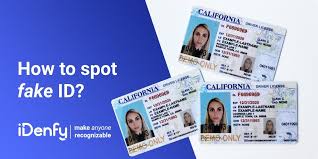Educational ID Cards
Introduction
In an age where technology is reshaping every aspect of life, the education sector is no exception. One of the most overlooked yet powerful innovations in the education system today is the Educational ID Card. Far from being just simple plastic cards with a student’s name and photograph, these ID cards are now becoming sophisticated tools that improve learning outcomes, enhance student engagement, and fortify security measures across campuses. The convergence of smart technology, RFID chips, and digital innovation has turned these cards into multi-functional tools that are reshaping the future of education.
This article explores the rising influence of Educational ID Cards on the learning environment, covering everything from product features, market trends, and target audiences to how they align with broader educational goals. We’ll also delve into the technological specifics of these cards, providing a detailed look at their role in the digital transformation of education.
Section 1: What Are Educational ID Cards?
The Basics of Educational ID Cards
At their core, Educational ID Cards are identification tools used in academic environments to authenticate and monitor students, staff, and faculty members. Traditionally, these cards have included basic personal information such as the student’s name, ID number, and a photo. However, modern Educational ID Cards are equipped with technologies like Radio Frequency Identification (RFID) and Near Field Communication (NFC), allowing them to serve a wide range of functions beyond identification.
From Simple Identification to Smart Tools
Educational ID Cards have evolved into smart tools that provide access control, attendance tracking, and cashless payment systems. Many institutions are leveraging these cards to integrate into learning management systems (LMS), offering personalized learning opportunities and improving administrative efficiency.
Types of Educational ID Cards
- Basic Plastic Cards – Simple cards with printed details used for identification.
- RFID-Enabled Cards – Cards embedded with microchips that allow wireless data transmission.
- Smart Cards – Integrated circuits that can store and process data, used for multiple applications, including access, payments, and academic tracking.
- Digital ID Cards – Stored on mobile devices, combining identification with a suite of digital tools.
Section 2: Key Features of Educational ID Cards
1. RFID and NFC Technology
The integration of RFID and NFC technology into Educational ID Cards allows for contactless data exchange, making tasks like attendance tracking, building access, and even cafeteria payments seamless and efficient. RFID-enabled cards allow administrators to monitor student attendance without manual effort, reducing paperwork and eliminating errors.
How RFID Works in Education
- Attendance Tracking: RFID readers installed at entry points automatically log student arrivals and departures, ensuring accurate attendance records.
- Building Access: RFID cards grant students and staff access to authorized areas only, enhancing campus security.
- Library Management: These cards allow students to check out library books by simply scanning their ID, linking to their student accounts automatically.
2. Secure Access Control
One of the main reasons for implementing Educational ID Cards is to boost security. These cards control access to different areas within the school or university campus, ensuring only authorized individuals can enter specific buildings. This is especially vital in larger institutions where unauthorized entry can be a concern.
3. Personalized Learning Environments
Educational ID Cards can also be integrated with student learning management systems (LMS), making them a key part of personalized learning environments. Through integration, teachers can access real-time data about a student’s performance, enabling them to tailor learning experiences to individual needs.
4. Cashless Payments
Many institutions have introduced cashless payment systems linked to Educational ID Cards. Students can load money onto their cards, which they can use for purchases in school cafeterias, libraries, and bookstores. This reduces the need for students to carry cash and helps streamline school operations.
5. Real-Time Analytics and Data Collection
The most innovative feature of these smart ID cards is their ability to collect real-time data on student behavior, performance, and activity. This data can be analyzed to optimize teaching strategies, provide timely interventions, and track academic progress.
Section 3: The Benefits of Educational ID Cards for Schools
1. Enhanced Security
The integration of RFID and smart card technology enables schools to maintain a higher level of security by controlling access to various areas on campus. This not only helps to keep students and staff safe but also prevents theft, vandalism, and unauthorized intrusions.
2. Streamlined Operations
Educational ID Cards simplify many administrative processes, from taking attendance to managing cafeteria purchases and even controlling building access. The reduction in manual tasks allows administrators to focus on more important aspects of school management.
3. Cost Efficiency
While the initial investment in smart ID cards and related infrastructure may seem high, the long-term cost savings from improved operational efficiency, reduced paperwork, and better resource management are significant. For example, automatic attendance tracking eliminates the need for additional personnel to manage roll calls.
4. Promotes Accountability and Engagement
Educational ID Cards also promote a sense of accountability among students. By integrating these cards with learning platforms, schools can provide feedback to students about their attendance, performance, and even library usage. This data encourages students to engage more actively with their academic life.
5. Seamless Integration with Other Technologies
The versatility of these cards allows them to be integrated with various digital systems, including attendance systems, learning management platforms, and student information systems (SIS). This means the entire campus can become a connected ecosystem, creating a smoother and more efficient learning experience.
Section 4: Target Audience for Educational ID Cards
1. Schools and Educational Institutions
The primary audience for Educational ID Cards is schools, universities, and educational institutions. These cards are essential for any institution looking to enhance student security, streamline operations, and embrace modern learning tools.
2. Administrators and Decision-Makers
School administrators, IT departments, and decision-makers within the educational sector are key targets for Educational ID Cards. They seek solutions that offer enhanced security, improved administrative efficiency, and the ability to track student performance and attendance in real-time.
3. Students and Parents
While Educational ID Cards are not marketed directly to students and parents, they are key stakeholders. Students benefit from enhanced safety, convenience, and personalized learning, while parents gain peace of mind knowing their children are part of a secure and well-managed environment.
Section 5: Market Analysis and Trends
1. Growing Demand for Digital Transformation in Education
The demand for digital transformation in education is at an all-time high, driven by a need for improved security, administrative efficiency, and personalized learning experiences. The global market for smart cards, particularly in education, is expected to witness significant growth as more schools adopt this technology to stay competitive.
2. The Shift Toward RFID Technology
RFID technology is a driving force behind the evolution of Educational ID Cards. Schools are adopting RFID cards not just for attendance tracking but for enhanced security measures and cashless payment systems, which contribute to a safer and more efficient school environment.
3. Integration with E-Learning Platforms
Educational ID Cards are becoming more integrated with e-learning platforms. As online and hybrid learning environments become more common, these cards play a critical role in ensuring that both students and educators can seamlessly navigate between physical and digital spaces.
4. Rising Importance of Data Privacy
As smart cards become more popular, concerns about data privacy and security are rising. Educational institutions are required to follow strict guidelines to ensure the privacy of student information, making it essential to adopt secure and compliant smart card systems.
Section 6: Challenges in Implementing Educational ID Cards
1. Initial Costs and Infrastructure
One of the major challenges for educational institutions when adopting smart ID cards is the initial investment in infrastructure. Installing RFID readers, setting up databases, and linking ID cards to multiple systems can be expensive. However, the long-term benefits often outweigh these upfront costs.
2. Data Security and Privacy Concerns
Educational institutions must comply with regulations such as FERPA (Family Educational Rights and Privacy Act) in the U.S., which governs the protection of student information. Schools need to ensure that all data collected via ID cards is stored securely and used ethically.
3. Technological Adaptation
Another challenge is ensuring that students, faculty, and staff adapt to the new technology. Training may be necessary to ensure that everyone understands how to use the smart cards and associated systems effectively.
Conclusion: The Future of Educational ID Cards
As schools and universities continue to modernize and embrace digital tools, Educational ID Cards will play an increasingly vital role in creating more secure, efficient, and personalized learning environments. Whether through enhancing campus security, simplifying administrative tasks, or facilitating personalized learning, these cards are set to become indispensable tools in the future of education.
Educational ID Cards represent much more than just identification. They are a gateway to innovative learning experiences, data-driven decisions, and safer school environments. As technology continues to evolve, the potential for these cards to transform the education sector is vast, positioning them at the heart of the future of learning.
 Replica ID Uses
Replica ID Uses
 Fake Utah ID
Fake Utah ID
 Replica ID Benefits
Replica ID Benefits
 fake ID market analysis
fake ID market analysis
 Novelty University ID
Novelty University ID
 Fake Florida ID
Fake Florida ID
 Buy Fake University ID
Buy Fake University ID

